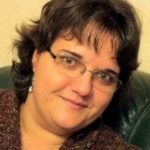Link to Pubmed [PMID] – 22984554
Link to DOI – 10.1371/journal.pone.0044755
PLoS One 2012 ; 7(9): e44755
The aim of the present study was to weigh up, at the community level, the respective roles played by pandemic Influenza (pH1N1) virus and co-circulating human Non-Influenza Respiratory Viruses (NIRVs) during the first wave of the 2009 pH1N1 pandemic.A population-based prospective cohort study was conducted in Reunion Island during the austral winter 2009 (weeks 30-44) that allowed identification of 125 households with at least one member who developed symptoms of Influenza-like illness (ILI). Three consecutive nasal swabs were collected from each household member (443 individuals) on day 0, 3 and 8 post-ILI report and tested for pH1N1 and 15 NIRVs by RT-PCR.Two successive waves of viral infections were identified: a first wave (W33-37) when pH1N1 was dominant and co-circulated with NIRVs, sharply interrupted by a second wave (W38-44), almost exclusively composed of NIRVs, mainly human Rhinoviruses (hRV) and Coronaviruses (hCoV). Data suggest that some interference may occur between NIRVs and pH1N1 when they co-circulate within the same household, where NIRVs were more likely to infect pH1N1 negative individuals than pH1N1 positive peers (relative risk: 3.13, 95% CI: 1.80-5.46, P<0.001). Viral shedding was significantly shorter (P = 0.035) in patients who were co-infected by pH1N1 and NIRV or by two different NIRVs compared to those who were infected with only one virus, whatever this virus was (pH1N1 or NIRVs). Although intense co-circulation of NIRVs (especially hRV) likely brought pH1N1 under the detection threshold, it did not prevent spread of the pandemic Influenza virus within the susceptible population nor induction of an extensive herd immunity to it.Our results suggest that NIRV co-infections during Influenza epidemics may act as cofactors that contribute to shape an outbreak and modulate the attack rate. They further warrant broad spectrum studies to fully understand viral epidemics.

